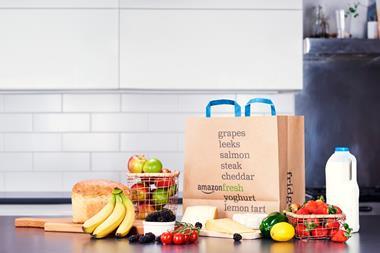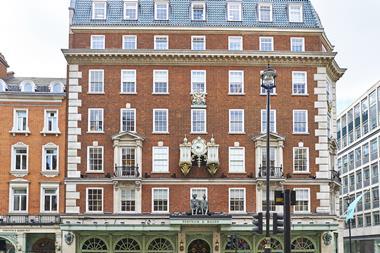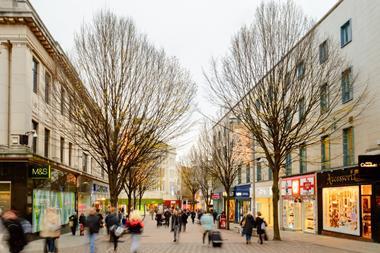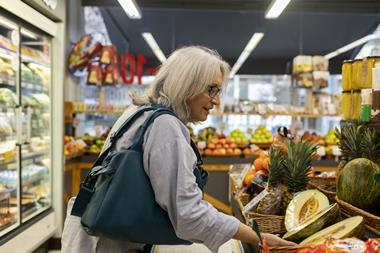After news that sites have been secured for Amazon Go stores in London, is it time for rivals to reassess the tech giant’s threat?
Amazon’s impact on the UK grocery market has so far been modest. There are just seven branches of Whole Foods Market - all in London - two fewer than when Amazon acquired the chain in a £10.7bn deal in 2017.
And Amazon Fresh, offering groceries by same-day delivery, including Whole Foods’ range, remains limited to a selection of postcodes in London and the home counties.
But last week a senior real estate source confirmed UK sites for the first high-tech Amazon Go stores, where shoppers can pick up what they want and walk out, had been acquired.
So is it time to reassess Amazon’s threat to its UK grocery rivals? And who should be worried?
In the US, Amazon Go has favoured high-footfall locations “not shared by supermarkets” says Bryan Roberts, global insights director at TCC, a pattern that fits broadly what we now know about the UK launch.
Sites of around 5,000 sq ft - larger than the 2,000 sq ft typical in the US - have been secured in “key central London locations” but not those attracting the very highest rents, indicating a growth strategy rather than a loss-making brand-enhancement exercise, according to our real estate source.
That revelation followed a Daily Mail report in January that Amazon Gos could also open in Surrey, Kent, Berkshire, Buckinghamshire, Hertfordshire, Essex and Middlesex.
In the US, too, there are signs that Amazon’s ambition for Go reaches beyond the 10 stores to have opened since the beginning of last year. Bloomberg reported in January that sources had revealed plans for 3,000.
Read more: Has Amazon disrupted advertising too?
Based on the pace of the US rollout, the number of UK sites acquired is likely to be “mid to high single digits” according to Bruno Monteyne, senior analyst at Bernstein.
Beyond the likely numbers, the next plank in building an understanding of the threat lies in knowing the potential offering. In the US, it’s freshly prepared food to go, meal kits and branded and own label groceries. There are Amazon Basics from batteries to plasters but it’s mostly food, including some Whole Foods Market products. It’s a convenience offering, but its “food-for-now” focus and more limited “actual range of groceries” make it far from your typical c-store, according to Roberts. “This isn’t a place to go for a packet of fags, a sandwich and some bin liners,” he says.
While it will target the same locations as some of the mults’ c-stores, aiming for “people working locally”, it’s not the likes of Tesco Metro and Sainsbury’s Local that will be most directly challenged because “they cover other convenience segments as well” says Monteyne. Instead, Pret a Manger, Eat and M&S Simply Food are more likely to find the presence of an Amazon Go costly, he says.
Getting the range right in that “food for now” marketplace could be Amazon’s toughest UK grocery challenge yet, adds Monteyne.
“The UK does on-the-go food - and ready meals - amazingly well,” he says. “This will be an even bigger challenge for Amazon than Fresh because they will have to keep innovating every month like UK stores.”
Perhaps an acquisition would help? Amazon Gos can open in much smaller spaces and suit transport hubs among other locations, according to Brittain Ladd, a former Amazon executive, now US-based founder of Six-Page Consulting. M&S has more than 350 Simply Foods in railway stations, motorway services and airports, run as franchises by BP, Moto and SSP.
Test phase
But it’s unlikely the UK plans for Amazon Go are yet so advanced, according to the analysts. “I think they will be in test phase before scaling this up materially,” says Monteyne.
The pressure Amazon Go will create in the shorter term will be for UK grocers to raise their technology game, believes Lisa Byfield-Green, senior analyst at LZ Retailytics. The stores use cameras and sensors to track what shoppers pick up and put down, so they can take what they want and go. Payment is automatically deducted from a credit card linked to their Amazon account.
UK supermarkets have introduced similar shopping experiences since the first US Amazon Go opened, but none is as seamless. Sainsbury’s in London’s Clapham North Station and the Co-op in Manchester’s West Didsbury both allow customers to leave without going near a checkout, but they must still scan each purchase on their phone as they shop, paying via an app. Tesco is trialling a similar system in a store inside its Welwyn Garden City HQ.
Meanwhile, a number of Londis and Budgens are working with the app Ubamarket to allow customers to scan as they shop, but have so far stopped short of going fully checkout-free, over theft concerns. Shoppers must scan a QR code at a checkout before leaving.
Read more: Amazon to end Restaurants takeaway delivery service
The various trials mean that even in terms of store tech, as in food to go, Amazon is not arriving in a naïve market, according to Monteyne. And he points out that Amazon Go requires customers to “check in” by scanning their recent-generation Amazon app-equipped mobile phone at a turnstile on entry.
But, it’s agreed, total shopping time is shortened. Byfield-Green thinks it will “reset” UK customer expectation, sparking renewed investment and innovation in checkout-free tech.
She also thinks that, while Amazon Go is purely store-based, its arrival could open more customers’ eyes to those other grocery offerings that are online, namely Fresh and through it Whole Foods, “raising their credentials” and “accelerating their success”.
No one is ready to predict that Amazon Go will overnight become a full-scale assault on UK grocery, and even 100 stores wouldn’t hurt Tesco, Sainsbury’s or Asda, according to Ray Gaul, senior VP of retail insights at Kantar Consulting.
But clearly the more subtle upshot of its arrival, even as a separate offering to Fresh and Whole Foods, will be that a two-pronged attack is now three.
Where the stores are found in the US
Seattle: Four stores, including the first, an 1,800 sq ft store that opened in January 2018 at the base of Amazon’s Day One Tower on 7th Avenue. The latest is the smallest so far at just 450 sq ft and is located inside the Amazon-occupied Macy’s building, with restricted access.
Chicago: The first Amazon Go store outside Seattle debuted in September, with the opening of a 2,000 sq ft store. A further three have opened in the city since.
San Francisco: Amazon Go reached its third city in October, with the opening of a 2,300 sq ft store in California Street. Amazon has since added a second San Francisco store.




















No comments yet